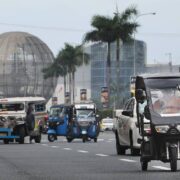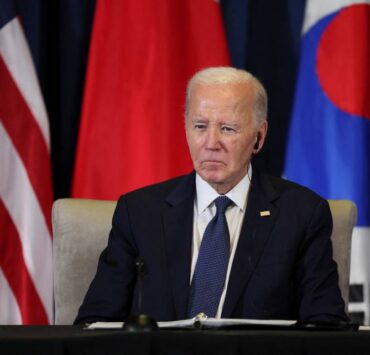Taxing animal burps
Away from the anger and frustration that characterized the two-week climate talks in Baku, Azerbaijan, where negotiators only managed to cough up $300 billion annually in climate finance, Danish legislators have achieved a breakthrough in reducing greenhouse gases (GHG) that are blamed for climate change.
After months of long debate over a measure that others would outright dismiss as a joke, Denmark approved a tax on farm animals’ farts and burps, becoming the world’s first country to tax emissions from agriculture.
BBC described the tax as “the world’s first fart tax” (“Flatulence tax: Denmark agrees deal for livestock emissions levy,” 11/19/24). From 2030, BBC said “farmers will have to pay a levy of 300 kroner ($43; £34) per ton of methane (as per carbon dioxide equivalent) on emissions from livestock including cows and pigs, which will rise to 750 kroner in 2035.”
The New York Times (NYT) joined in the fun, describing this climate-mitigating measure as “the world’s first belch and manure tax” (“Taxing Farm Animals’ Farts and Burps? Denmark Gives It a Try,” 11/26/2024).
For sure, this is an ingenious way to reduce Denmark’s carbon footprint and contribute to achieving the Paris Agreement’s goal of limiting global warming to 1.5 degrees Celsius. Rather than imposing a carbon tax on all of us for the consumption of earth-warming fossil fuels such as coal, oil, and natural gas, why not a law targeting farm animals such as cows, pigs, and sheep, whose burps and farts produce methane, a greenhouse gas?
Although it may sound humorous, the rationale for this bizarre tax in this northern country is not laughable. “There are five times as many pigs and cows in Denmark as there are people,” according to the NYT report. It also reveals that “nearly two-thirds of its land is taken up by farming. And agriculture is becoming its largest share of climate pollution, putting lawmakers under intense public pressure to reduce it.”
Split-gas levy. On the southern side of our world, New Zealand has a sheep population that exceeds humans. So, have our Kiwi friends thought about taxing the methane produced by their livestock as well? They did.
In 2022, the government introduced the idea of a “burp tax” as part of drastic efforts to curb gas emissions, as livestock burps emit methane. The proposed measure would target cows, which are responsible for about 40 percent of GHG globally, and sheep.
With seven times as many cows and sheep as people, NZ considered “a farm-level split-gas levy on agricultural emissions with built-in incentives to reduce emissions and sequester carbon,” said an NPR report (“New Zealand announces world-first plan to tax cow and sheep burps,” 6/9/22).
At first, the cows’ lowing and sheep’s bleating couldn’t drown out this idea. The former NZ climate change minister endorsed the move “to cut the amount of methane we are putting into the atmosphere” through “an effective emissions pricing system,” said the NPR report, describing it as a “development on the carbon hoofprint.”
According to a BBC report, NZ has 10 million cows and 26 million sheep. Globally, methane emissions have “a global warming impact 84 times higher than carbon dioxide over a 20-year period,” said BBC (“How New Zealand is reducing methane emissions from farming,” 12/15/2023).
Apart from the oddity of the proposal, the first thing that comes to mind is how the government intends to measure methane from cows and sheep’s burps, for instance. Well, proponents of this tax have invented a “GreenFeed system” that looks like a pizza oven, as the BBC described the contraption. It measures the bull’s breath and burps after snacking on dried pellets “to build a picture of just how methane his digestive system is churning out.”
The burping tax was jettisoned by the new NZ government in June this year, following vigorous protests from farmers worried about the tax’s impact on their profits and livelihoods.
Closer to home, the level of methane output from Philippine livestock contributes 18 percent to the gross agricultural output and ensures livelihood and food security for Filipinos.
It was estimated by the World Bank that the Philippines produced over 500,000 tons of methane per year, and pigs and chickens are the primary culprits (“Overview of Agricultural Pollution in the Philippines,” 2016). A significant amount of methane emissions is caused by the decomposition of animal manure from swine and poultry.
This could be food for thought as the holiday season approaches, as parties and Christmas Eve dinners are incomplete without lechon (roasted pig) gracing our dinner tables. Taxing our pigs’ burps may trigger a taxpayer revolution for sure, so go ahead and indulge in cholesterol-elevating meals with your loved ones.
But let’s make sure to reduce our carbon footprint when we travel, use power, or shop. By doing this, we can reduce our environmental impact and prevent our farm animals from being the ones to bear the brunt of our modern excesses that damage the planet.
—————-
For comments: mubac@inquirer.com.ph


















